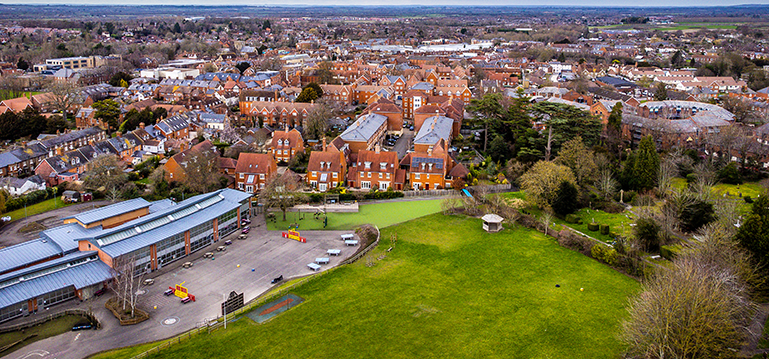Embedding links with the community/local area in the school’s new curriculum

Quick links:
Information about the school
Ysgol Gynradd Gymraeg Pontardawe is situated in the town of Pontardawe in the Swansea valley and is maintained by Neath Port Talbot authority. The school has a wide catchment area. There are 340 pupils between 3 and 11 years old on roll, including 65 nursery age children.
The percentage of pupils who are eligible for free school meals is 17.7%, which is similar to the national average for primary schools. Although most pupils come from English-speaking homes, around 42% of pupils come from Welsh-speaking homes.
Eleven per cent (11%) of pupils are on the additional learning needs register, which is below the national average.
The senior leadership team includes the headteacher, the deputy headteacher and four middle leaders.
Context and background to the effective or innovative practice
The school has a clear vision for the Curriculum for Wales and was one of Welsh Government’s pioneer schools to re-design the curriculum. The school’s main aim to was ensure that the local area is an integral part of the school’s curriculum. A unique curriculum was designed, called ‘Trysorau Tawe’ (Tawe Treasures), which is based on the area’s history, geography and heritage, in addition to forging local links to the life and work of all pupils. By doing so, the school has planned the curriculum purposefully to provide valuable and cohesive learning experiences with the aim of developing independent, ambitious and principled learners.
Description of the nature of the strategy or activity
Curriculum Vision – How should the school’s curriculum look to the school’s pupils?
Teachers have created a curriculum that gives full consideration to the local area and is rooted skilfully in the culture and local area of the valley. One element of this is the way they have succeeded in using the local area as a basis for the learning at the beginning of each theme. The school’s new vision for the curriculum focuses on improving pupils’ skills while taking pride in their local area, heritage and community culture. Teachers focus on the local elements to inform the pupil’s voice and the learning activities. Following research by staff and parents about the local area, classes have been named after local peaks and mountains. A cluster project was undertaken, entitled ‘Cynefin’, and new facts and historical information were discovered about the local area. This reinforces pupils’ self-respect and pride in their local area.
Activities
A collection of themes was formed across the school that began with a local element – be that famous people, a particular landmark or a learning base in the town. An example of this is the Carn Llechart stone circle, which was a starting point to inspire the Celts theme for pupils, which included a walk and activities around the historic site. This ensures that pupils have strong ownership of their curriculum. ‘Cwm Cerddorol’ (Musical Valley), ‘Cariad@Gwm’ (Love of the Valley), ‘Croesi’r Bont’ (Crossing the Bridge) and ‘Trydanu Tawe’ (Electrifying the Swansea Valley) are further examples of themes that blend living elements of the local area into pupils’ activities and experiences. These experiences include an ambitious art project based on local dialect and original poems by the pupils. Visits to the town include workshops in the local arts centre, Riverside Park, Gwrhyd Mountain electricity project and the local Welsh language centre, ‘Tŷ’r Gwrhyd’. The consistency of these weekly visits strengthens pupils’ awareness of their local roots.
Professional learning
The school’s leaders conducted research into the areas of learning experience to implement the vision for ‘Trysorau Tawe’. As a result, training days were held where the vision for each area of learning and experience was presented to all staff, for example by giving each class a unique local name. Some were found by looking at old digital maps, for example Ynys-gelynen, Nant y Gaseg and Mynydd Marchywel.
The school is also part of the ‘Cynefin’ cluster project, which collates themes and online resources across the cluster to enrich the curriculum offer of local schools. The county’s Welsh language officer has also created rich oral programmes (Drilio Disglair, Sgleinio ein Sgwrsio and Blociau Bendigedig), which promote literacy skills through the ‘Trysorau Tawe’ curriculum.
What impact has this work had on provision and learners’ standards?
The dedication of staff in this area has had a positive effect on professional learning as it provides opportunities to develop an understanding of all areas of learning and experience, work with colleagues from different areas by sharing good practice and present ideas with colleagues through in-service training and other meetings.
Learners have pride in their square mile, their local area and their heritage. Pupils now recognise names and areas in their local area confidently.
How have you shared your good practice?
The school is currently working closely with the cluster to share good practice. The headteacher and members of the senior management team have established professional learning networks that contribute to embedding the school’s curriculum more widely. This includes holding events, visits and conferences.